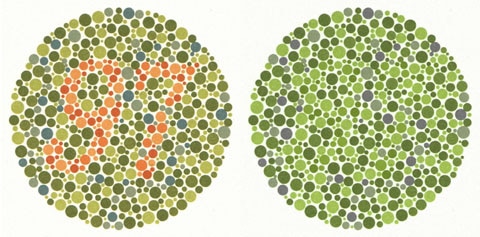 Our engineering manager John Meijer shares his knowledge. Periodically he discusses a different topic in the field of electrical safety. This time his blog is about: color blindness in electrical engineering.
Our engineering manager John Meijer shares his knowledge. Periodically he discusses a different topic in the field of electrical safety. This time his blog is about: color blindness in electrical engineering.
One in twelve
Did you know that about 1 in 12 men suffer from some form of color blindness? For women this is only 1 in 250. Since there are still more men than women working in electrical engineering, color blindness is a subject to consider. Red-green color blindness is the most common from and is important for our discipline, because someone with red-green color blindness sees little or no difference between red and green tones. When designing an installation, it is good to take into account in what way you will display certain warnings or dangers. In this blog I therefore pay attention to the use of colors in the various warnings and signals of a machine or installation.
Experience color blindness yourself
Being color blind, what does that actually mean in everyday life? The practical examples below give a good idea of what someone who is color blind has trouble seeing:
- The red crosses above the highway that switch on in the event of danger or road works;
- Reading a graph or map;
- Estimating whether fruit and vegetables are ripe and whether meat is already cooked;
- A red emergency stop button on a green machine;
- Color coding on cables and pipes;
- Warning lights on control panels.
Inspectors from the platform ‘NEC44: Electrical equipment of machines’ have carried out the inspection of machines and installations with special glasses, in order to be able to experience for themselves what someone with color blindness does or does not see when operating an installation. During this test, extra attention was paid to the visibility of warnings or alarms. The test provided a lot of food for thought, because unsafe situations can arise more easily if someone with color blindness cannot distinguish or perceive certain things properly.
Warning lights
During the test, they found out that the way warning lights are displayed on machines can lead to dangerous situations. These lights should give a warning if danger is imminent. However, we see that tricolor LEDs are increasingly being used. There is then one fixture that indicates the status of a specific operating condition by means of three different colors of light. However, someone who is color blind often cannot distinguish between those three colors. In this case, the use of a light column with three separate lamps is safer. Someone who is color blind can then still see whether the top, middle or bottom lamp is lit and thus determine the status of the machine. When designing a machine, you can therefore ask yourself whether using a fixture with a single lens and a tricolor LED is the safest option.
When designing a machine, also consider the design of textual and/or visual warnings. For example, take a good look at which colors you use when making text plates or stickers for the operation of machines. These will not be well readable if the color combination is not adjusted for someone who is color blind. For example, a red text on a green background is an unfavorable color combination.
Share your thoughts
In short; color blindness is an important consideration when designing new installations. Until now, this subject has remained very underexposed, in the coming years we want and will pay more attention to it within the NEN working groups.
With the next revision of NEN-EN-IEC 60204-1: Electrical equipment of machines, we can make good use of your input. Suggestions and ideas regarding this subject, or other matters that you come across that may pose a danger to machines or installations, are very welcome. Feel free to leave your suggestions and ideas in a comment section below this blog.
Test it for yourself
There are of course several forms of color blindness, but as mentioned, the most common is red-green color blindness. Do you want to quickly test whether you also suffer from this? Then look at the image below. Do you see two (almost) identical circles? Then there is a good chance that you suffer from color blindness to some extent. On this website (only in Dutch) you will find more information about color blindness and the solutions, for example there are glasses that can (partially) correct color blindness.
If you any questions after reading this blog, please don’t hesitate to ask them below.


